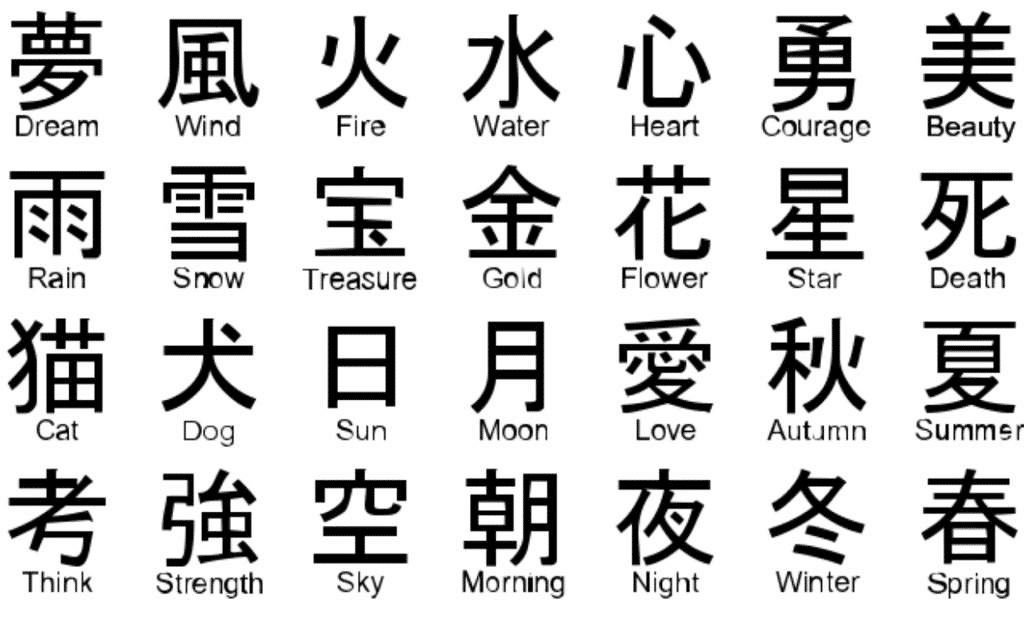Here at TruFluency, we want to help you reach that goal. In this blog, we’re going to cover the basics of Japanese and even a few phrases to kick off your start into another language.
はじめましょう – Let’s start!
Why learn Japanese?
Out of the world’s 7,000 (ish) languages you could study, why choose Japanese? To answer this question we asked Laura, a young Japanese American, to share some advantages of being bilingual in her two mother tongues.
“Lots of people are pretty interested in Japan and Japanese, so when I tell people I speak Japanese, a lot of the time it’s a great conversation starter,” Laura shares with us. She goes on to say, “It’s certainly affected the way I think about things, because language affects the way you see the world.”

TruFluency’s Founder Micah Bellieu has also picked up Japanese, for reasons of nostalgia and networking alike. Of her experience she tells us this:
“My grandmother told me about Japan when I was a child. She lived there 2 years during the Korean war and learned a lot of everyday Japanese. Her stories always fascinated me. Then, I got into the language training business, and many of our clients are from Japan. I was really excited to learn a non-romance language using The Bellieu Method (focus on speaking and little to no grammar). So far my instructor has said that I’m the most conversationally fluent of any of her students (the other students are focusing on grammar and reading/writing I believe). It’s a long journey – 800 hours down, 1200 to go – but it’s fascinating, and I can’t stop now!”
More than a new lens to view the world through, the ability to effectively communicate in Japanese grants you access to a whole treasure trove of cultural aspects: literature, cuisine (there’s more than sushi!) and architecture just to name a few. And of course, anime. We even compiled a list of our favorite Japanese TV shows and books sorted by proficiency level.
And here’s a bonus: you’ll be more marketable. Japan is home to the third largest economy in the world (in GDP standards), and there are ongoing discussions about opening up the job market to foreigners.
Enough of the merits of studying Japanese, let’s dive into the nitty gritty of the three writing systems.
The Big 3: Hiragana, Katakana and Kanji
Japan has three main writing systems, each with their own history and purpose.
Before we jump in, a little grammatical vocab. When learning Japanese, you’ll want to know the meaning of syllabary, which is the fancy word for a character that represents the sound of a syllable (sa) rather than a letter (s).
Kana, a Japanese writing system, houses two scripts that are composed of syllabaries: Hiragana and Katakana. Each script has 46 characters, and there are between one and three strokes each character. The scripts are usually learned in charts, like the ones below.
Hiragana
If you’re just starting to learn Japanese, you’ll most likely start here. Hiragana is used for native Japanese words, and is recognizable by its smooth and fluid characters. Allegedly, this script was created by women sometime around the 8th century.
Some characters can be modified by smaller marks (like ” or °) to make even more sounds. For example, adding the ” mark above the shi character will transform it to the ji sound: し → じ. Knowing Hiragana will also help you read Kanji, which is a vast and illustrative system that we’ll cover in a bit.

Katakana
Katakana uses the same consonants and vowels to make up a different set of 46 characters, which are drawn in a more rigid style. This script is usually reserved for foreign words/names and onomatopoeias. It’s the least frequently used of the three.
Fun fact: ピカピカ translates to “shiny” in English and is pronounced like pikapika. If you’re a Pokemon fan, this makes total sense.

Kanji
Kanji, a lofty and Chinese-influenced script, has more than 50,000 characters. Each character tends to encompass a concept and has more than one pronunciation depending on how it is read. The good news is that there are only about 2,000 characters in use, so don’t get bogged down by that five digit number up there. You’ll be able to make some Kanji characters with only two strokes, while others require 20. Check out some of the most basic Kanji below.

Oh, and therearenospaces
And no, that wasn’t a typo. Or at least it wouldn’t be in Japanese. A typical Japanese sentence will use at least two writing scripts, and there won’t be spaces in between the characters as there would be in a written English sentence. Check out the image below by Academia Cervena to get a better understanding of how this might look in a paragraph.
Unfortunately, real life doesn’t color code the sentences by script. Sigh. But, remember that each system has its own distinctive style and soon your ability to recognize which is which will become second nature.

10 basic Japanese words and phrases
Now that you’ve done the hard work of conceptualizing the three scripts, let’s get to the fun part and learn some basic Japanese words and phrases. We’ll write the English word first followed by the Japanese pronunciation and characters.
Hello – Kon’nichiwa
こんにちは
Yes – Hai
はい
No – Iie
いいえ
Nice to meet you – Hajimemashite
はじめまして
*Notice the modifier!
How are you? – Ogenki desu ka?
お元気ですか?
Please – Onegai shimasu
お願いします
Thanks – Arigatō
ありがとう
You’re welcome – Dōitashimashite
どういたしまして
What’s your name? – O namae wa nan desu ka?
お名前は何ですか?
My name is ___ – Watashi no namae wa ___ desu
私の名前は ___ です
Here’s a challenge: try to find the character in the charts above and spell out the word yourself, keeping in mind that you’re looking for the corresponding syllable rather than the letter. You might be surprised at how much sense it will make!
Level up your Japanese
Let’s take a look at what you’ve accomplished.
A new anime-to-watch list? Check.
The three main writing systems? Check.
Identifying mixed script sentences? Check.
You’re off to a great start to becoming another one of the 122,000 people that know Japanese as a second language. But let’s face it, this is just the beginning. Like we said, and like you’ve now seen, Japanese is a complex language. There are formalities, colloquialisms and moderations to consider.
What will really take you to the next level is learning from a native Japanese speaker who is experienced and trained in teaching the language. Luckily, we know just who to call.
Contact us to learn more about our Japanese coaches who offer a combined 30+ years of experience, and start working towards a new way of seeing the world today.





